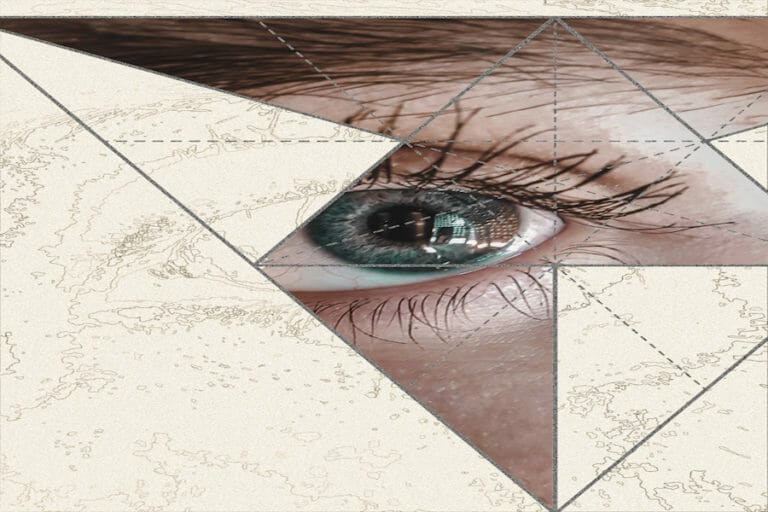What is a platonic solid?
A platonic solid is the most regular polyhedra with a very long history. Plato associated each of the five solids with a classical element. He believed that these shapes were the building blocks of the universe, and that everything was made up of these shapes in some way.
The five Platonic solids are the tetrahedron (fire), cube (earth), octahedron (air), dodecahedron (ether), and icosahedron (water). Each solid has a different number of faces, edges, and vertices. The tetrahedron has 4 faces, the cube has 6 faces, the octahedron has 8 faces, the dodecahedron has 12 faces, and the icosahedron has 20 faces.

Dive into the history of platonic solids, the sacred foundation of all.
Plato, a Greek philosopher, first described the five regular solids in 350 B.C.E. Still, to this day, they are more relevant than ever. These solids are also known as the Platonic solids or the perfect solids. The five shapes are the tetrahedron (four face), cube (six face), octahedron (eight face), dodecahedron (twelve face), and icosahedron (twenty face).
Plato believed that the elements were made of these shapes. For example, he thought that fire was made of tetrahedrons, earth was made of cubes, air was made of octahedrons, water was made of icosahedrons, and dodecahedrons were the shape of the universe.
Johannes Kepler was the first to discover that there were only five platonic solids. He did this by trying to find a way to pack spheres together as closely as possible. He found that the five platonic solids were the only shapes that could be packed together in this way.
Kepler also discovered that the platonic solids have some interesting properties. For example, the tetrahedron is the only platonic solid that has all of its faces being triangles. The cube is the only platonic solid that has all of its faces being squares. And the dodecahedron is the only platonic solid that has all of its faces being pentagons.
The Platonic solids have been studied by many mathematicians over the years and have a very close relationship with sacred geometry. They are beautiful shapes that have many interesting properties. All of the faces of a Platonic solid are the same size and shape. Also, all of the vertices (corners) are the same. You can see these shapes in nature, too.

3 Examples of Platonic Solids and Their Relationship to Sacred Geometry & Nature
There are countless examples of the relationship platonic solids share with sacred geometry. Below, we share three ways they interlap and connect.
Flower of life
Plato’s five solids, also known as the Platonic bodies or Platonic solids, are the convex regular polyhedra. They are the building blocks of nature and the universe, and have been studied since ancient times.
The flower of life is a sacred geometry symbol that has been used throughout history in many different cultures. It is said to represent the cycle of creation and the interconnectedness of all life. The flower of life has also been linked to the Platonic solids, as each solid can be found within it.

The relationship between the Platonic solids and the flower of life is a deep and mysterious one. Some believe that the two are connected in a sacred way, and that the flower of life contains the secrets of the universe. Others believe that the Platonic solids are simply a mathematical coincidence. Whatever the truth may be, there is no doubt that these two ancient symbols have a strong connection.
Metatron’s cube
There is a strong relationship between the platonic solids and Metatron’s Cube. Each of the five platonic solids (tetrahedron, cube, octahedron, dodecahedron, icosahedron) are contained within Metatron’s Cube. Furthermore, the Platonic solids can be seen as three-dimensional projections of the two-dimensional faces of Metatron’s Cube.
The platonic solids also have a strong relationship to the element of fire. The tetrahedron, for example, is the simplest form of fire and is associated with the qualities of heat, energy, and enthusiasm. The cube is representative of matter in its solid form, and is associated with the element of earth. The octahedron, on the other hand, is representative of air and is associated with the qualities of movement, flexibility, and change.

When taken together, the platonic solids and Metatron’s Cube provide a powerful symbol of wholeness, balance, and harmony. They remind us that all elements are interrelated and interconnected, and that we must strive for balance in our lives if we are to achieve harmony and unity.
Octahedron
Plato’s solids, or the Platonic solids, are the five regular polyhedra: the tetrahedron, hexahedron (cube), octahedron, dodecahedron, and icosahedron. They are also known as the five elements of ancient Greece: earth (hexahedron), air (tetrahedron), water (octahedron), fire (dodecahedron), and aether or spirit (icosahedron).
The octahedron is the fourth regular polyhedron. It has eight faces, each made of an equilateral triangle. The octahedron is dual to the cube; that is, the faces of the octahedron correspond to the edges of the cube, and vice versa. It has six vertices and 12 edges. The octahedron is a Platonic solid.

The octahedron is a member of the cubic crystal family, which means that it has three four-fold axes of symmetry. The other Platonic solids are also members of this family, as are the cube and the dodecahedron. The octahedron has four faces that meet at each vertex, and its edges are all the same length. The octahedron is a special case of a pyramid, with an eight triangular face and six vertices. It is the only Platonic solid that is not a dual of another Platonic solid.
The octahedron is also a special case of a trigonal trapezohedron, with eight triangular faces and 12 vertices. The octahedron is the only Platonic solid that is not a dual of another Platonic solid.
The octahedron is the only Platonic solid that has an inversion symmetry. This means that if you were to reflect the octahedron in a mirror, it would look exactly the same. The octahedron is also the only Platonic solid that is not chiral. This means that it cannot be superimposed on its mirror image.
But, how are platonic solids used in the “real” world?
The Platonic solids have many interesting properties. For example, they are all highly symmetrical. They also have a very regular structure, with each face being the same shape and size.
Despite their simplicity, Platonic solids have many applications. They can be used in architecture, engineering, and even art. They are a key part of the study of geometry, and they have inspired many mathematicians and artists over the centuries.
The Platonic solids can be used to make models of molecules. The tetrahedron is the shape of the methane molecule, and the octahedron is the shape of the oxygen molecule. The dodecahedron is the shape of the vitamin B12 molecule.
What about the healing properties of platonic solids?
There is a reason that so many ancient cultures revered and utilized platonic solids in their spiritual practices- these shapes are powerful! Each of the five platonic solids (tetrahedron, cube, octahedron, dodecahedron, icosahedron) correspond to one of the five elements (fire, earth, air, water, ether/spirit), and can be used to access and harness the power of those elements.
The tetrahedron, corresponding to fire, is the simplest of the platonic solids. It is also the most sharp and forceful of the shapes, making it excellent for cutting through negative energy or emotional blockages. The cube, corresponding to earth, is a grounding and stabilizing shape. It can be used to help create a sense of safety and security, or to promote physical healing.

The octahedron, corresponding to air, is all about movement and change. It can be used to encourage new perspectives, or to facilitate communication and understanding. The dodecahedron, corresponding to water, is a shape of flow and emotion. It can be used to facilitate emotional healing, or to promote creativity and intuition. The icosahedron, corresponding to ether or spirit, is the most complex of the platonic solids. It is a shape of connection and unity, and can be used to promote spiritual growth or understanding.
Each of these shapes has its own unique properties and uses. By utilizing the power of platonic solids, you can access the element that you need in order to create balance and harmony in your life. You can work with these elements in meditation, for example.
Why should people know about platonic solids?
Platonic solids are a fascinating topic of mathematics, and they can have many applications in the real world. For example, they can be used to create efficient storage containers or to study the structural integrity of buildings. Platonic solids can also be used in art and design, as they can create beautiful and symmetrical patterns. Finally, Platonic solids can be used in meditation and mindfulness practices, as their shapes can help to focus the mind. Ultimately, there are many reasons why people should know about Platonic solids, and they offer a lot of potential for both personal and practical applications.
External Resources
Polyhedra
Convex Polyhedra Are Assemnbled of Pyramids
Star Tetrahedron Crystal: The Meaning of Sacred Geometry
9.1: Polyhedrons
Geometry in Grade 8: Platonic Solids as an Example of Waldorf’s Education of the Whole Person
